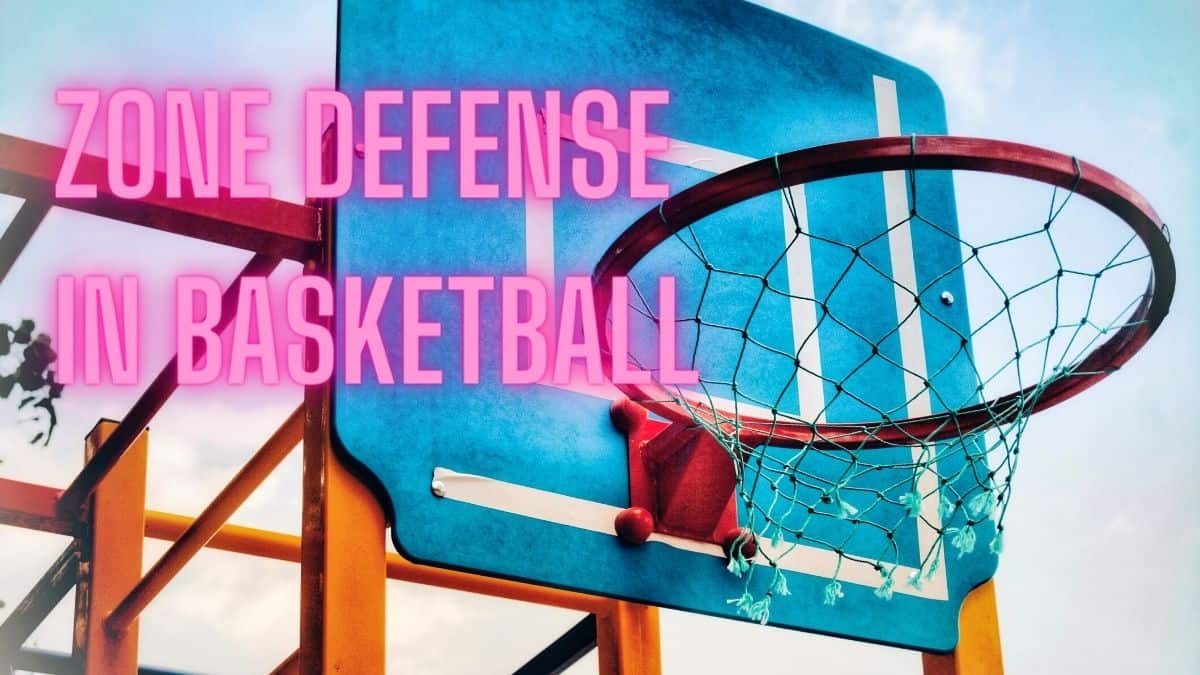Zone defense is a style of basketball defense structured around a pretty simple concept: Defenders are assigned to specific regions of the floor. It’s your house. What happens in your house is your responsibility.
Understanding this zone strategy and why it’s important will certainly make you a better coach and player, but it will also help expand your appreciation of the sport. When you start to see the game behind the game it opens up a whole new world in basketball. Zone defense is a crucial part of that puzzle.
Here we’ll lay out the structure and strategy associated with zone defensive schemas. We’ll cover all of the basic techniques needed to get a zone defense working well in your playbook, but we’ll also look into some techniques for conducting offense against a zone defense.
By the end of this, you should be able to spot a zone in play and grasp the strategic intentions. If you’re a coach or player, you’ll be well prepared to confront a zone defense. But you should also have a good base from which to develop your own zone defense and know when and how to choose the right zone for your needs.
Towards the end we’ll take a look at the origins and evolution of zone defense and dive into some of its most prominent and successful applications. Finally, we’ll leave you with some materials to aid in implementation.
Let’s get to it…
Implementing a Zone Defense
There’s a popular narrative that a zone is not dynamic enough to function against an NBA offense. And sometimes that’s the case. Still, time and time again we see a zone shut down an elite offense. Some insist that a zone is weak against perimeter shooting. Meanwhile, the Syracuse 2-3 zone has held opponents to below-average perimeter scoring in 22/25 seasons.
So the right, well-structured zone defense can be effective in all kinds of situations. But the concept does have some strengths and weaknesses.
Weaknesses of Zone Defenses
- No “on-ball pressure” means the offense controls the pace of the game.
- You really need to work at it to get a zone to stay effective against long range shooters.
- Relying on a zone defense can breed complacency in some teams. Roles are quite clear in a zone defense and that can have a tendency to discourage team work and independent thought.
- The opposing team can pretty easily hit on the idea of just sending their best player into your worst players zone.
Strengths of Zone Defenses
- A zone can help control a player who is too quick or too big to keep up with in man-to-man coverage.
- Slowed down action in the paint.
- Quick and easy to get started. A basic zone can be a great entry-level defensive strategy
- Reduces or eliminates the effects of screening.
- Conserves energy.
This all means you’ll want to think twice about leaning on a zone defense against elite distance shooting. It can also be a bad choice if your team is outmatched in size or skill in the guard positions. A zone is a little less flexible by its nature, so if a team can weave around it or crash through it effectively, it loses effectiveness.
Conversely, a zone becomes an attractive option If your opponent keeps forcing advantageous switches. It can also work well to slow down drives into the paint, since every drive is probably headed right into your biggest players. And if your team is athletically outmatched, a zone may do well to slow your opponent without exhausting your own players.
Types of Zone Defenses in Basketball
There are countless variations on the zone defensive strategy. And a team may well choose to dig into all of the subtle details of a particular zone, perfecting their implementation as a chef perfects a dish.
But the key differentiator used to classify various styles of zone defense is the initial formation. This initial formation is often referenced by a series of numbers. Take a look at how each title corresponds to the diagram of the initial formation. A 2-3 zone has 2 defenders out front and 3 in back. Simple shorthand, it can seem confusing at first, but it just makes sense.
3-2 Zone Defense
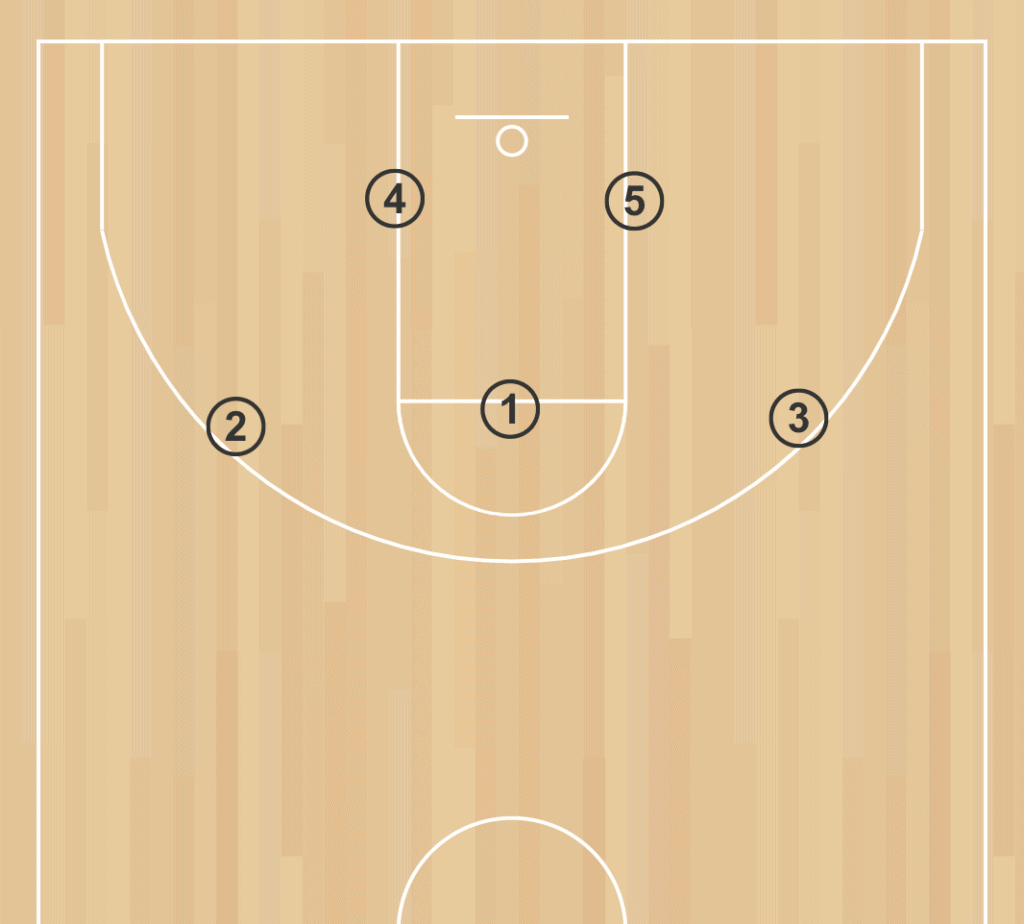
Supposedly, this was the original zone defense. As the story goes, Coach Cam Henderson was looking for a clever way to manage his defense in a new gym with a leaky roof. The zone strategy reduced the need for his players to make quick stops and turns. The first zone Cam settled on was the 3-2.
This formation may be worth a shot if you’re trying to combat mid-range marksmanship, since you’re condensing a lot of your defense at the free throw line. But in practicality, most 3-2 zones these days will shift the middle defender forward into a 1-2-2 zone. The 1-2-2 can be a little more dynamic and it can be more conducive to trapping.
2-3 Zone Defense
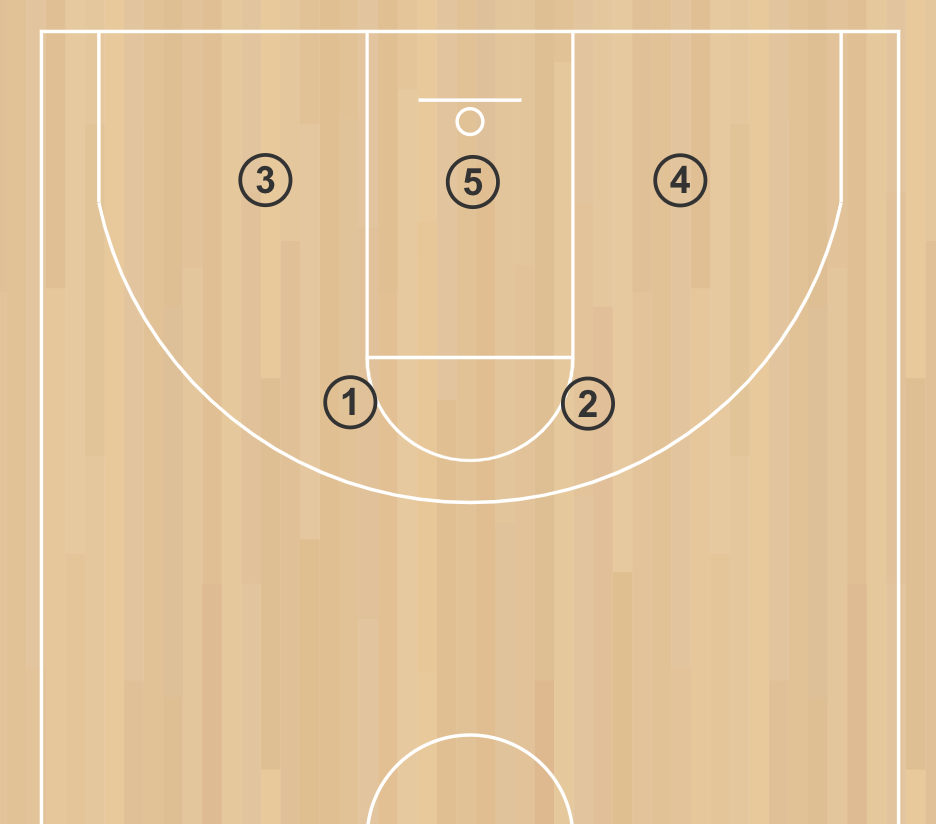
This was apparently the second version that old Cam Henderson’s stumbled upon in his early exploration of the zone defense. Cam wanted a little more rebound support, and it follows logically that shifting one of your defenders a little closer to the basket might do that for you.
It seems to have worked. The 2-3 zone is probably the most popular zone to this day. It’s really one of the simplest and most effective defensive systems in basketball. Jim Boeheim has been running a 2-3 at Syracuse for a generation, though it does seem to be failing a little these days.
The 2-3 zone is just an all-around reliable strategy, and it’s a great way to start introducing zone defensive concepts to young players. Just be careful that it doesn’t get too effective or it may start to suck the fun out of your games.
1-3-1 Zone Defense
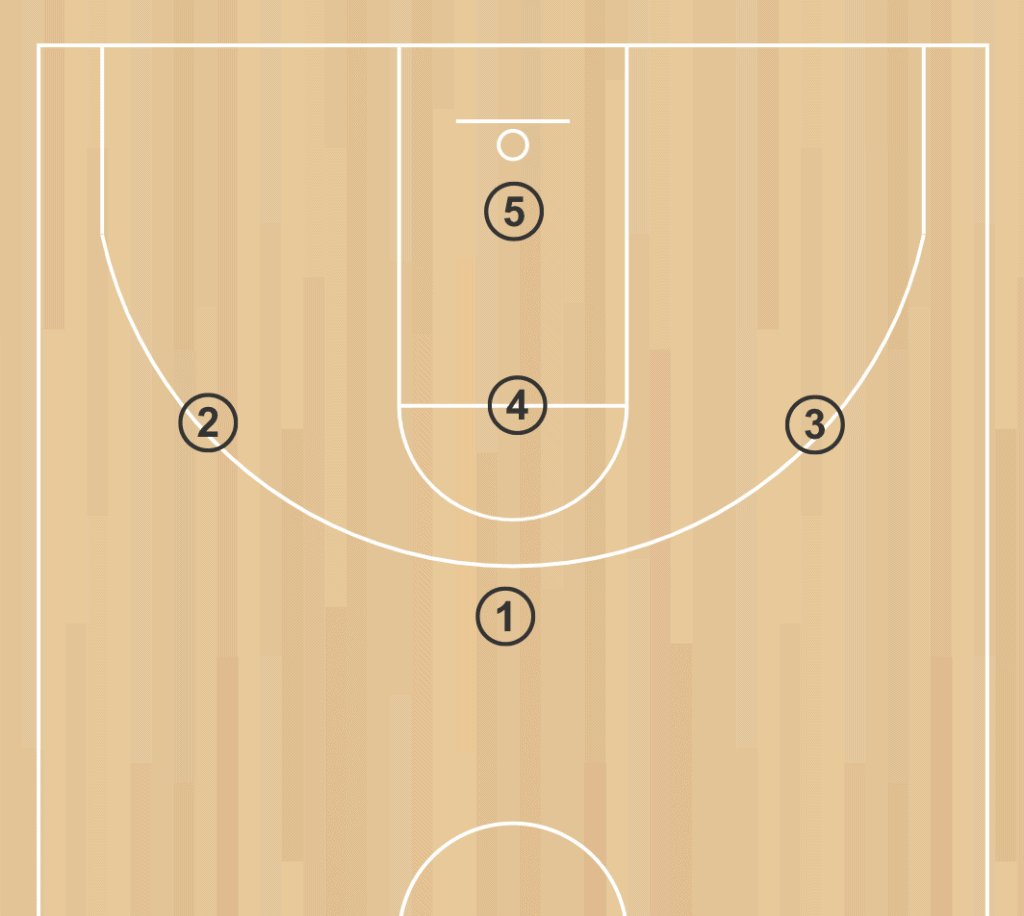
Getting a little wilder here with this interesting cross formation across the middle of the arc. The 1-3-1 zone can be very effective, but it’s a little more advanced than the 3-2 or the 2-3. This half court zone often functions alongside the 1-3-1 full court press.
That triangular formation out front can make this an effective trapping defense. The point defender directs the offensive ball handler to one side and the corresponding backup defender springs out for the double-team.
The corners end up being similarly dangerous, offering the illusion of space but easily locked down with multiple defenders in range.
1-2-2 Zone Defense
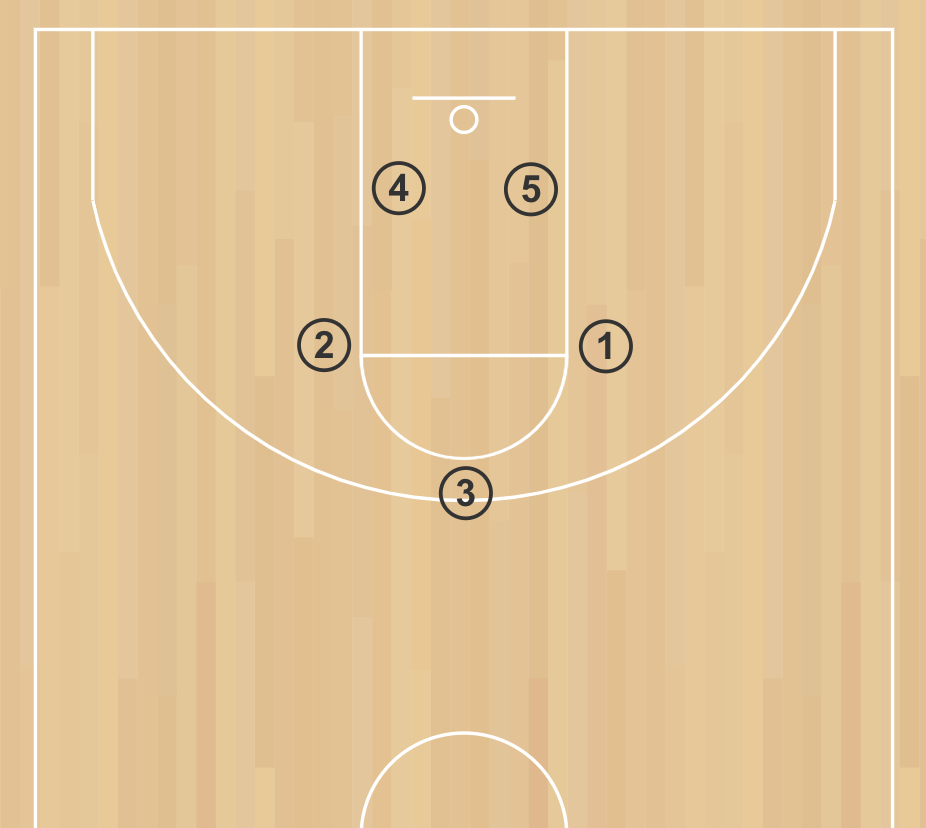
As mentioned earlier, this can be considered an adjustment to the 3-2 zone. Just shift that middle defender out to the top of the key. The strategy here though can look completely different from the 3-2.
With a 1-2-2, it’s common to assign the wing defenders a diagonal swath along the wings as opposed to the 3-2 where those wings are traditionally saddled with a larger chunk of the backcourt. This means that Individual strategic decision making in a 1-2-2 setup can be significantly different from that in a 3-2 setup.
But this totally depends on how the coach chooses to deploy this formation. I’ve seen plenty of different variations on this one.
2-1-2 Zone Defense
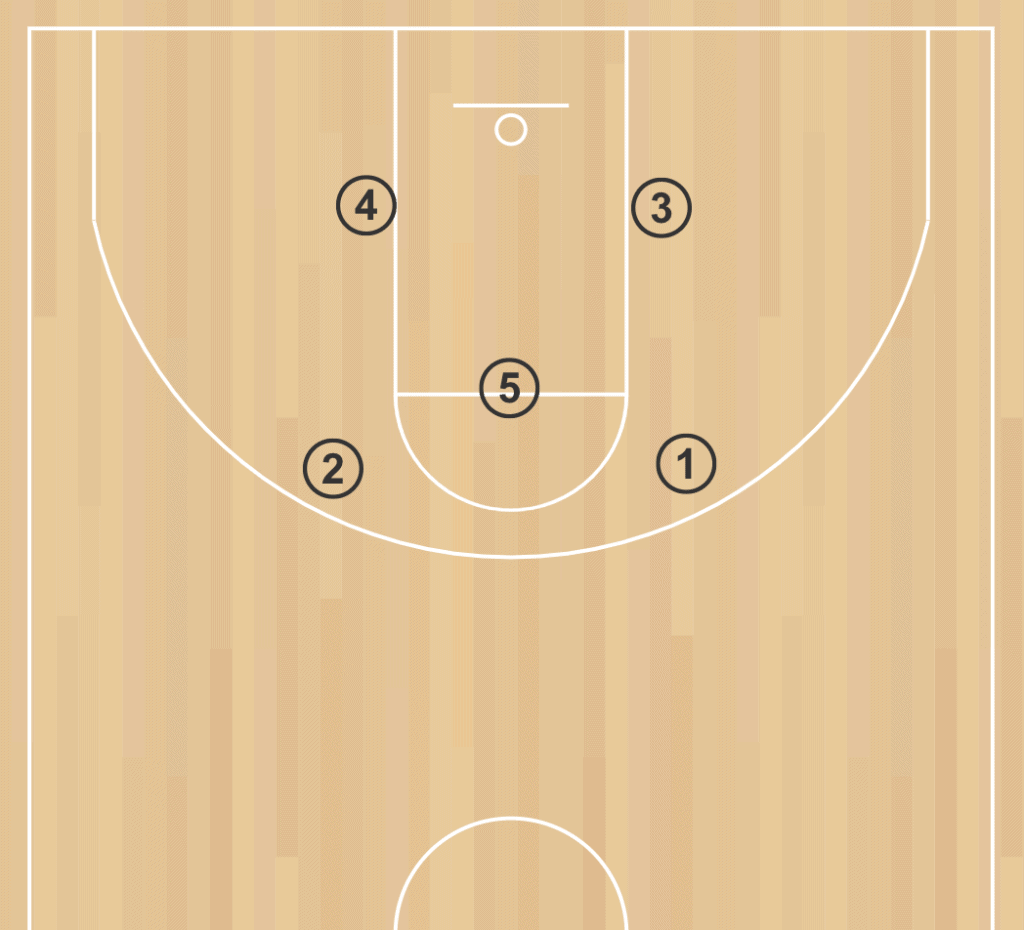
Okay, here we’re basically taking the old 3-2 and pushing the wings forward instead of the point. But the important detail here is that you’re dropping your center right in the middle. This can be the perfect adjustment for the right team.
Most zones will setup a point guard to greet the offense and guide them into trouble. Here we’ve got both guards out on the perimeter with your big backing them up. This can be great for perimeter defense. Your forwards drop back to the corners and the low post, backing up your 5. Yeah, you need the right team for this, but it can be pretty useful if you’ve got it.
Box and 1
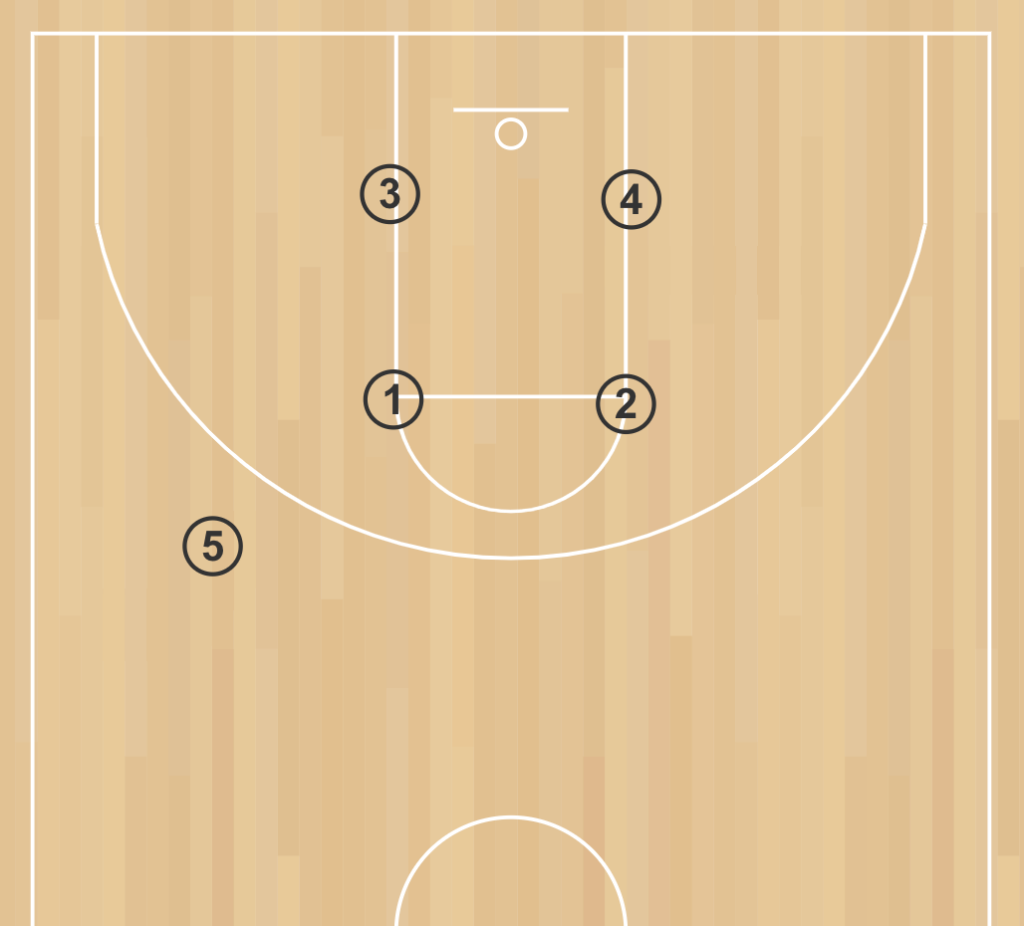
The Box and 1 defense is a hybridized strategy, but it bares mentioning as it’s been very effective in some high-profile situations, notably the 2018-2019 NBA finals when the Raptors used it against Steph Curry.
The box and 1 places a ‘box’ of 4 defenders around the paint, leaving a final player (typically your best defender) to hound the opposing team’s best player in man-to-man.
This formation can be extremely effective in situations where your opponent is reliant on a specific player for a lot of their scoring. If the chaser is able to control that opposing star player, you can essentially create a four on four game wit the remaining players.
Perfecting your Zone Defense
Really nailing a zone defense is going to take some practice. It’s easy to get up and running, but filling in the gaps and getting everyone moving fluidly will take practice and organization.
Clear communication is essential here. In addition to making certain that everyone fully understands the zone conceptually, you need to make sure that everyone is perfectly clear on rotations and responsibilities. One of the most common points of failure in a zone defense is confusion. If the ball enters a region of the court where zoning is ambiguous, it may remain unattended.
Attacking a Zone Defense
If possible, it’s always going to be better to look at a specific variation of a defense if you’re considering countermeasures. But the most widespread weakness of the zone defense in basketball is that it leaves gaps.
The ability of a team to tighten up those gaps will vary. But a focus on finding those gaps and threading into them with passing or strategic ball handling, can be the key to tearing apart a zone.
History of the Zone Defense in Basketball
These things are always a little tough to pin down, but it’s widely accepted that the zone defense in basketball originated with Coach Cam Henderson around 1914. Given that the game was invented in 1891, it’s reasonable to assume that someone hit on some similar strategies in the nearly 25 years leading up to Cam’s discovery, but he codified and described the technique and put it to good use.
Cam is also credited with the invention of fast break basketball. Not to take away from Cam’s legacy, but that seems almost less probable that it would take 25 years to see the value of bolting towards the opposing goal at high speed.
Prominent Examples
In 2003, Syracuse University coach Jim Boeheim led his team to an NCAA tournament championship with his 2-3 zone as a cornerstone of their defense. Boeheim has long championed the 2-3 zone and he’s certainly proven it can be effective at competitive levels. The Syracuse zone is a testament to the wisdom of doing one thing very well.
Coach John Chaney long favored a zone approach with his Temple University Owls basketball team. Since Chaney’s retirement, The Owls have shifted strategies. And there are a slough of other college coaches who incorporate various zone defenses in their playbook.
The zone strategy has gained prominence in recent years as a specialist tool in the NBA. In the 2018-2019 NBA Finals, the Toronto Raptors went to a box-and-one in a decidedly successful effort to control Steph Curry.
In the 2022-2023 season the Miami Heat have been going wild on the zone, deploying it more frequently than any team since the zone was made legal. And it has worked. The Heat have been consistently one of the top defenses in the league.
Conclusion
Zone defense in basketball can be a great tool for teams to use when trying to slow down an opposing team’s offense. It can be used to limit a team’s scoring options while forcing them to work harder to find an open shot.
While zone defense can be a very effective strategy, it is important to remember that it is not a panacea and must be used in conjunction with other defensive strategies in order to be effective. Ultimately, the success of any defensive strategy in basketball comes down to the players’ willingness and ability to execute it. With the right players and the proper coaching, zone defense can be a great asset to any team’s defensive arsenal.
FAQ
Do NBA teams play zone defense?
Up until 2001, zone defenses were technically illegal in the NBA. However, that wasn’t always easy to enforce. Now that they are technically legal we definitely see use of zone defensive strategies in the NBA, but they arise sparingly, though Eric Spoelstra and the Heat have been leaning on zone defense of late to dramatic effect.
What is the most common zone defense in basketball?
That’s an impossible question to answer categorically. But the 2-3 zone is likely the most common zone to be practiced across all levels of basketball. It’s not uncommon to see the 2-3 zone in youth leagues all the way up to the NBA.
